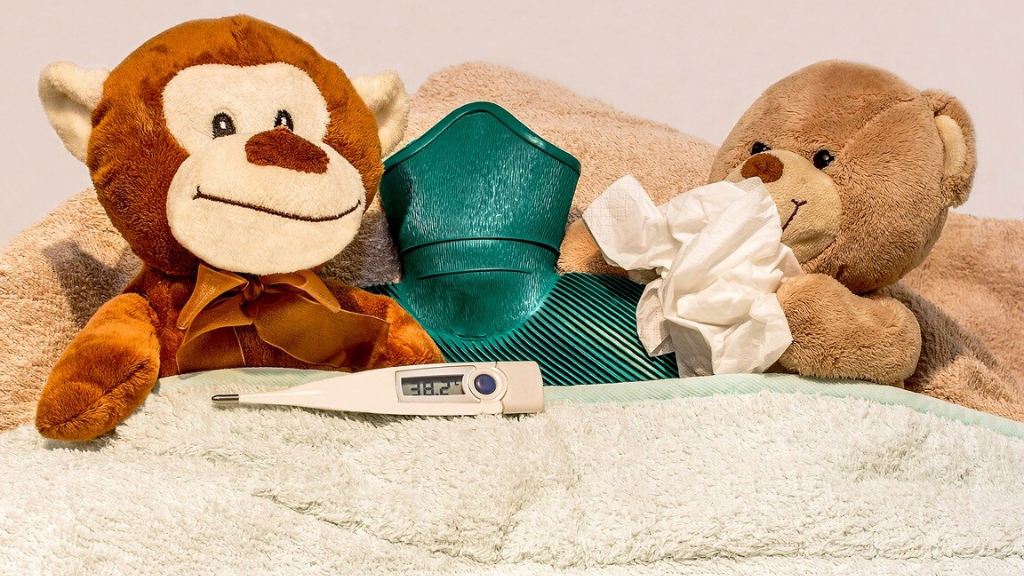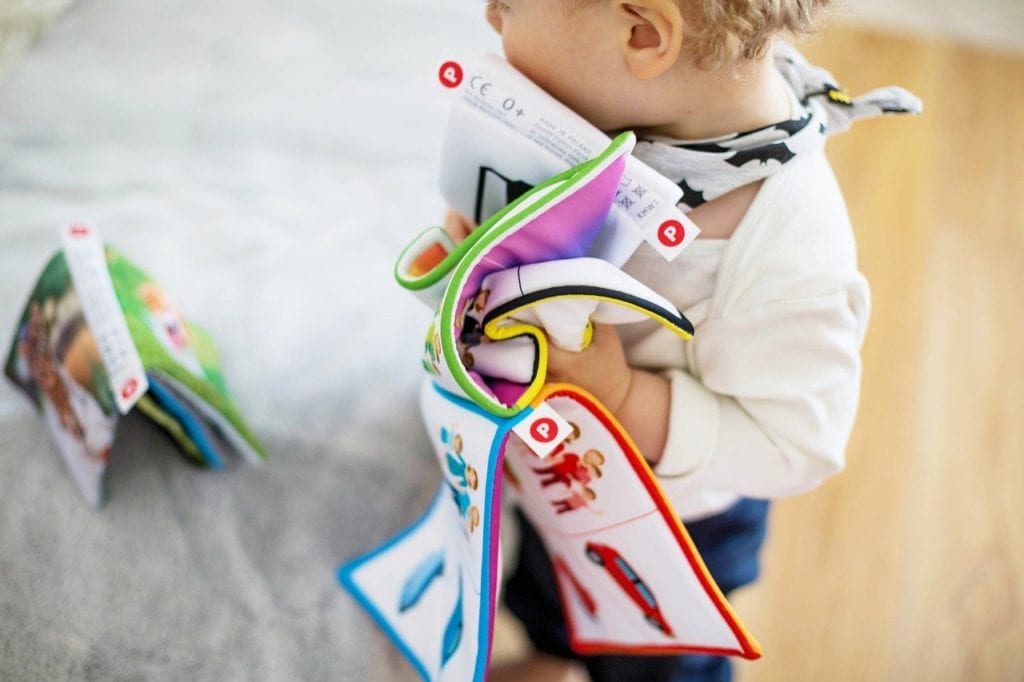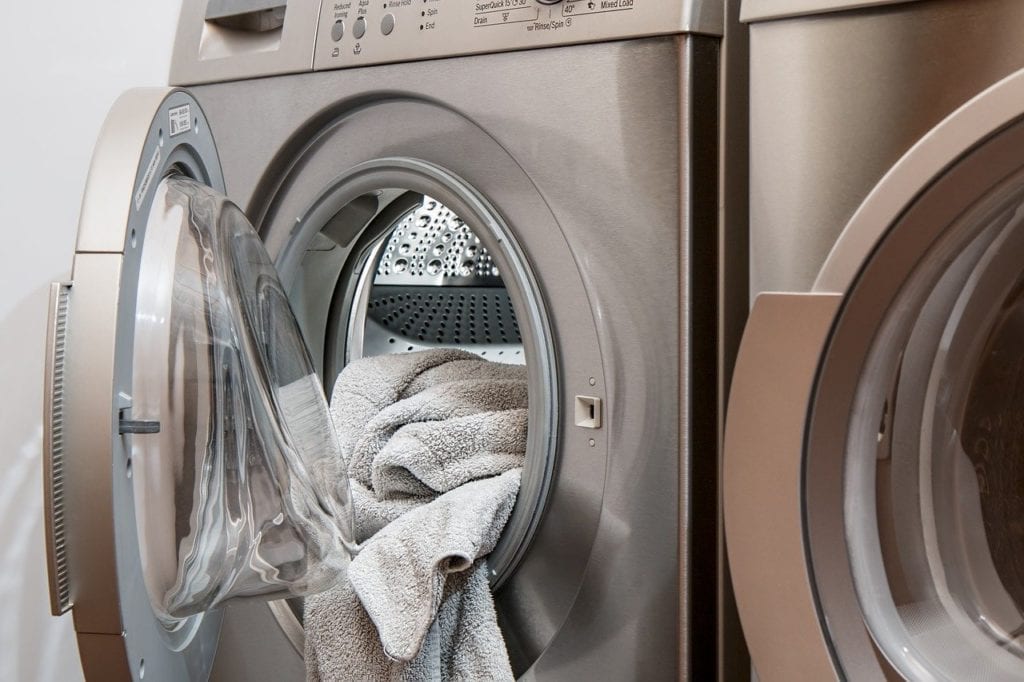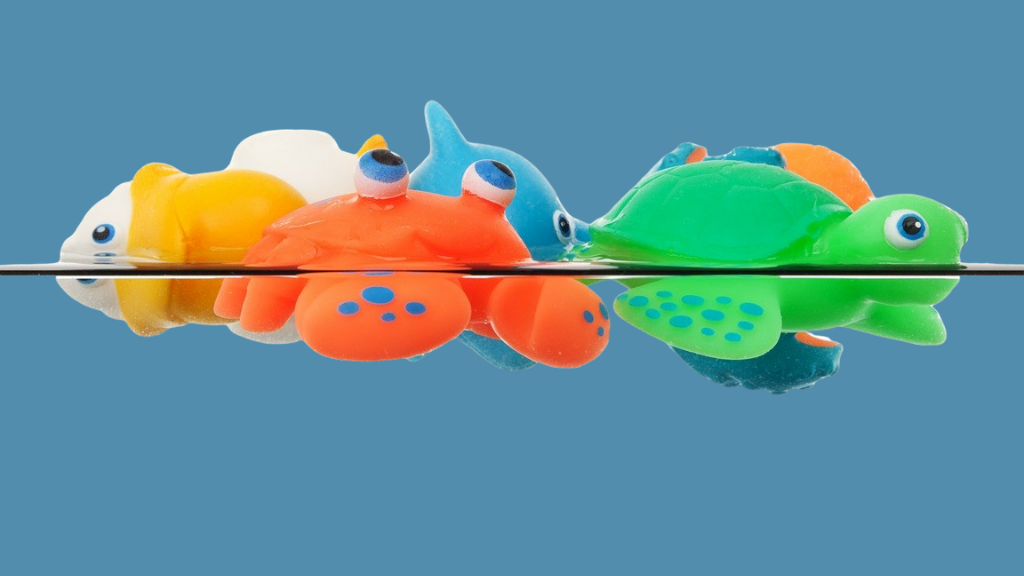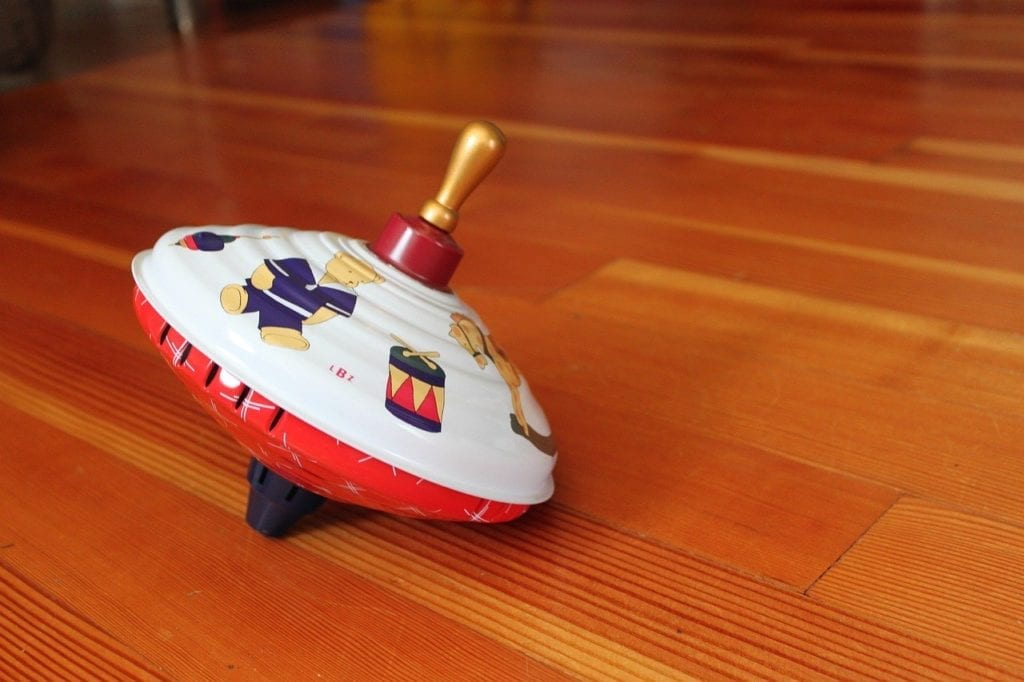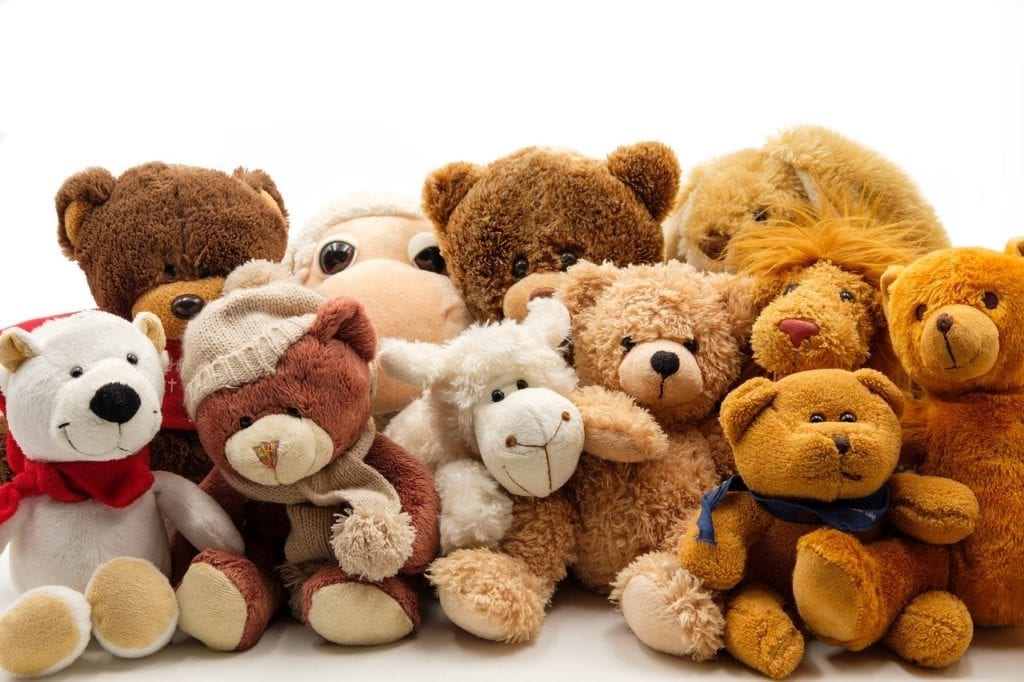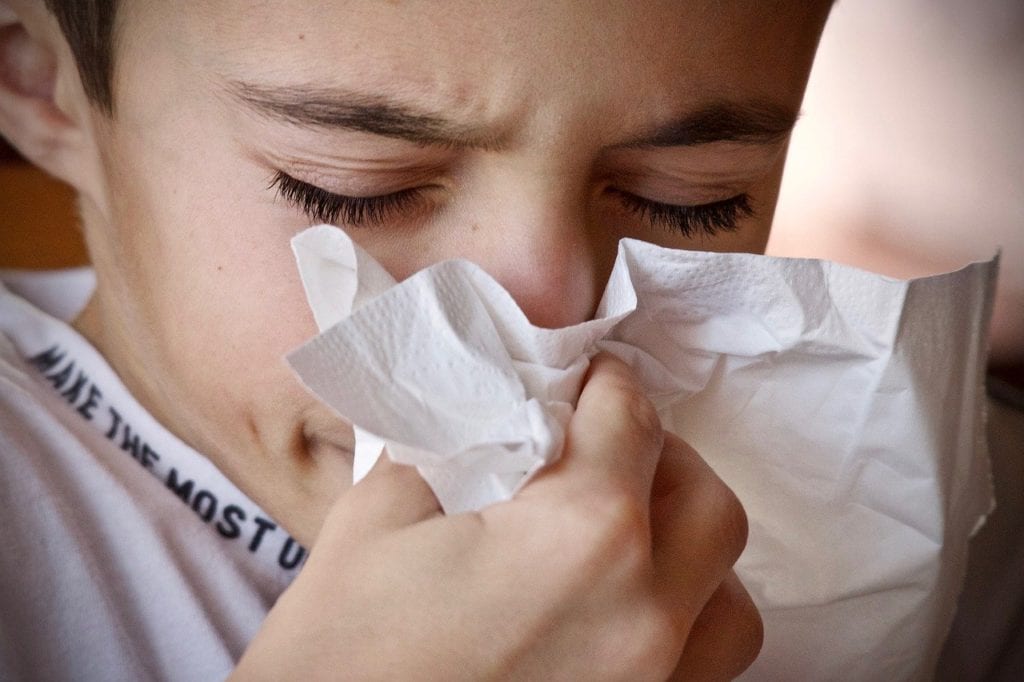With the COVID-19 outbreak, keeping our homes clean and our hands germ-free is more essential than ever. But for parents, keeping things clean is a year-round battle. If your kids have ever gotten Fifth Disease or Hand Foot and Mouth Disease, you already know how important it is to keep toys and playrooms clean and as germ-free as possible.
We’re all being reminded about cleaning surfaces, doorknobs, and frequently used devices like our phones and the TV remote. But for parents, the toys in your house are probably touched more often than anything else — and we all know kids are not typically concerned with hygiene.
For frequently used toys, caregivers should clean them at least once a week. Plush that kids play with often should be washed about once a month. At a minimum, consider every season change (in March, June, September, and December), as the time to give all the toys in the house a good clean. But all bets are off when kids get sick. At that point, everything should be cleaned and washed as soon as possible — especially if you have multiple kids in the house!
General House Cleaning
When someone is sick, you need to destroy the germs. Regular cleaning will not do it. A mantra to remember is “Disinfect to Destroy!” Find a cleaner that has the word “disinfectant” on the bottle or package. If you do not see that word, it means it does not properly disinfect and kill germs. Alternatively, buy a large container of bleach. In a spray bottle (properly label it!), mix a quarter-cup of chlorine bleach with a gallon of hot water. Then spray the non-porous surface. Don’t forget to include doorknobs and toilet handles! For porous surfaces (wood), use a mixture of one part distilled white vinegar to four parts distilled water in a spray bottle. Vinegar is also a safer option if you have pets in the house.
Toss It
After cleaning, you should toss away your sponge. If you can’t do that, at least microwave it, when damp, for two minutes to destroy any germs. Better yet, get used to cleaning with a microfiber cloth instead of a sponge. When done cleaning, wash it in a laundry machine on the hottest water setting. You should also throw away toothbrushes after someone gets sick. Make sure to replace kids’ toothbrushes every three months at a minimum.
Protect & Disinfect
Wash your hand frequently, and consider using gloves when cleaning, which helps control the spread of germs throughout your house or apartment. What also controls the spread of viruses throughout your living space is to have separate cloths or sponges. At a minimum, consider having a different cleaning cloth for the kitchen from the bathrooms. Don’t use the same material to clean bathrooms that you use to clean toys or literally anything else in your house. Please.
Washing Bedding, Blankets, and Plush
Wash with nonchlorine bleach in the hottest water possible, and dry on the warmest setting for at least 40 minutes. Of course, always read your labels before drying.
Washing Plastic Toys
Consider washing pacifiers and toys with hard plastic surfaces in the dishwasher if they do not have batteries or fabric. Place on the top rack on the delicate or gentle cycle. If there are small pieces, place them in a lingerie bag, which prevents small parts from falling to the bottom of the dishwasher. You can add one tablespoon of white vinegar in the dishwasher for extra cleaning power.
Alternatively, for soft plastic toys that can’t go in the dishwasher, place 1/4 cup of bleach in a bin or kitchen sink per 1 gallon of water. Let the toys soak for five minutes and then rinse and dry. Don’t forget to squeeze toys that have a hole in them (like bath toys), so the bleach solution gets inside the toy, too.
Note: If you are washing toys for young kids and babies that often end up in their mouths, consider using a vinegar solution mix for a natural, bleach-free cleaning remedy. Read more in the Wood and Electronics section below!
Washing Metal Toys
Fisher-Price recommends that caregivers sanitize trucks, trains, and other metal toys in a mixture of bleach and water. Since these toys often have rubber wheels, the dishwasher’s heat down the rubber material. Follow the method of cleaning the plastic toys above.
Washing Wooden and Electronic Toys
For toys that can’t be washed in the laundry or dishwasher, such as wooden toys or toys with electronics or batteries, spray them with a one-part mixture of distilled white vinegar to four parts distilled water. Spray the solution onto the surface of the toy and wipe dry. This solution is also great for plastic toys if parents want to forgo bleach solutions. Otherwise, some parents find wiping the toys with a disinfecting cloth or wipe works well, too. Just let the toy dry before giving it back to a child.
Stuffed Animals
If you can wash stuffed animals or plush animals in a laundry machine, wash them in the hottest water setting as possible and dry on high heat. Consider placing the plush in a lingerie bag or pillowcase to protect the plush when washing. Wash separately, if possible. Otherwise, make sure to wash it with like colors.
Don’t place the plush in the wash if it has batteries or other electronic components. If it does, or if the manufacturer does not recommend using the washing machine, wiping down the plush with a disinfecting cloth is a quick solution.
Alternatively, the U.S. Environmental Protection Agency offers a solution for cleaning soft toys that can’t be washed in a washing machine, or for parents who do not want to use bleach on the plush.
- Pour about 1/2 cup of baking soda into a plastic garbage bag. For more giant stuffed toys, consider adding more.
- Place the stuffed animal into the plastic bag. Squeeze excess air out of the bag, but leave just enough room so that the stuffed toy can freely move around and tumble when you shake the bag.
- Twist and tie the top of the plastic bag.
- Shake and tumble the bag for about two minutes. (Be careful not to puncture the bag if the stuffed toy has a hard object attached to the material.)
- Keep the stuffed toy enclosed in the bag for 15 minutes. The baking soda will not only deodorize the toy, but also will bind and help to liberate dirt and grime from the fabric.
- Open the bag after the 15 minutes. Shake excess baking soda off into the bag. Discard the bag in the trash.
- Remove residual baking soda, which includes dirt and grime, from the stuffed toy using a vacuum cleaner hose. Use a soft-bristled brush to scrape away caked-on baking soda and dirt. Gently shake and pat the soft toy with your hands over the trash can to liberate any remaining baking soda.
Teach kids to wash their hands and how to cough and sneeze!
A fun, teachable moment, is to get a bowl of water and place two tablespoons of pepper in it. Mix it up. Then have your child dip their finger in the container. Have them notice all the pepper flakes on their finger. Explain to them that the pepper is like germs. Have your child wash their hands with soap and water as they would normally. Inspect their fingers. If there are still pepper flakes on them, show them how the germs are still there!
Tell them to sing Twinkle Twinkle Little Star while washing their hands and see if they get all of the ‘germs’ off before rinsing. After they dry their hands, have them dip their finger in the bowl again. Do they notice that less pepper is sticking to their hands? Show them how washing their hands not only gets rid of germs, but prevents bacteria, too! Remind them to sneeze or cough into their elbow or tissue!
Hopefully, these tips and tricks help you keep a germ free home and a clean playroom!

